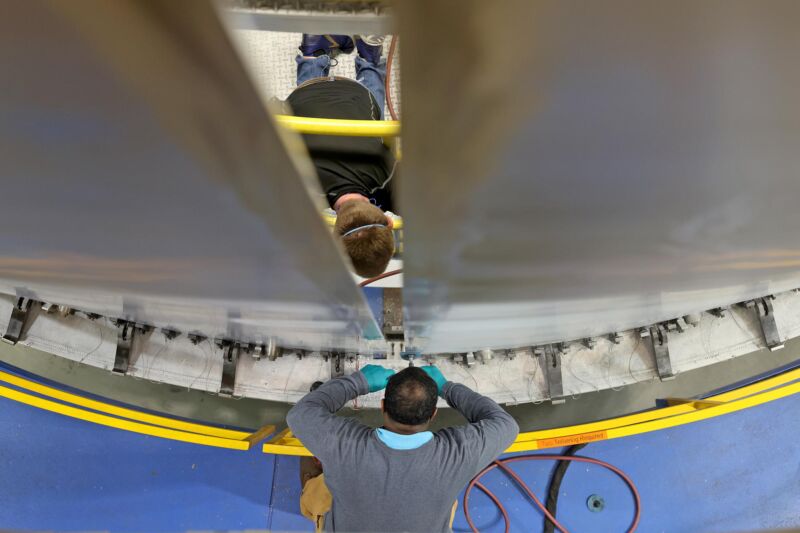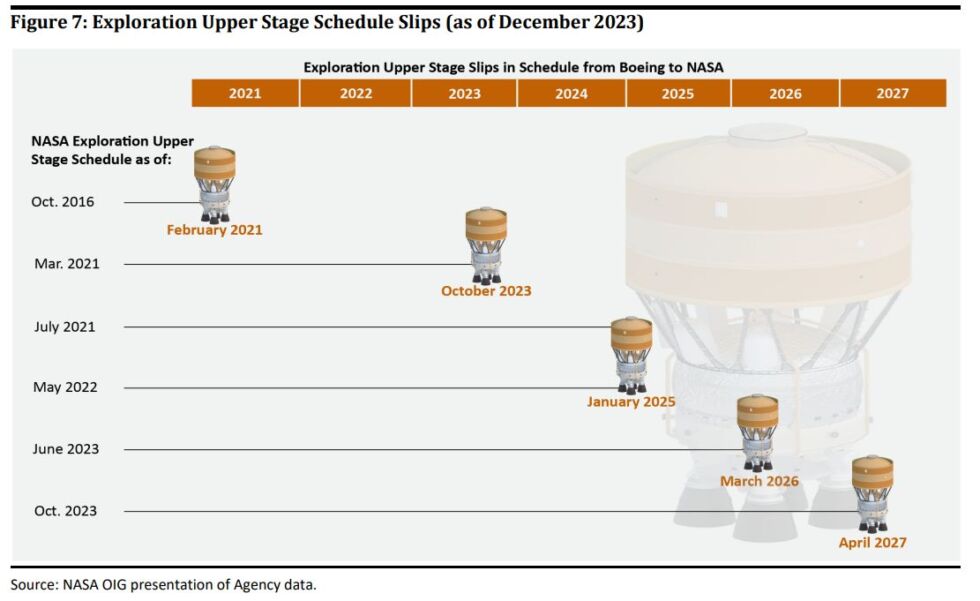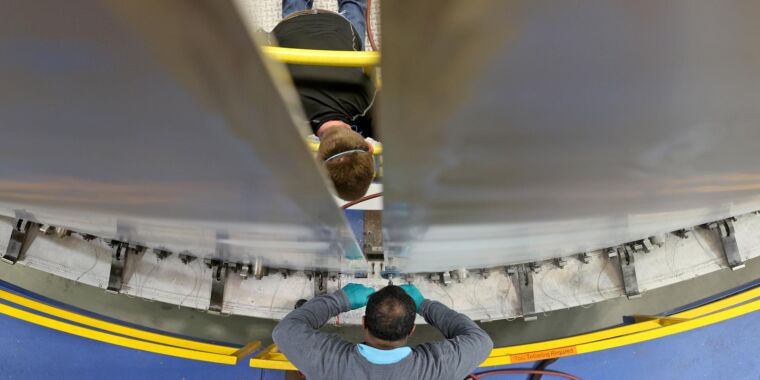
Michael DeMocker/NASA
NASA’s program to develop a new upper stage for the Space Launch System rocket is seven years behind schedule and significantly over budget, New report But alongside these headline numbers, there is also some eye-opening information about the project’s prime contractor, Boeing, and its poor quality control practices.
NASA considers the new Exploration Upper Stage, the more powerful second stage of the SLS rocket that debuted in late 2022, a key part of the Artemis program to return humans to the moon. The current plan calls for the new upper stage to be used starting with the second lunar landing, the Artemis 4 mission, currently scheduled for 2028. In NASA parlance, the upgraded version of the SLS rocket is known as Block 1B.
But for a variety of reasons—including the readiness of the lunar landers, the Lunar Gateway hardware, the new mobile launch tower, and more—NASA is unlikely to stick to that date. Now, based on the information in this new report, we may be able to add the Exploration Upper Stage to the list.
“We found a range of issues that could impede SLS Block 1B readiness for the Artemis IV program, including Boeing’s inadequate quality management system, high costs and schedules, and insufficient visibility into the projected costs of Block 1B,” said the report, signed by NASA Deputy Inspector General George A. Scott.
Quality control is a concern.
There are some surprising details in the report about Boeing’s quality control practices at its Michoud assembly plant in southern Louisiana, where the exploration upper stage is manufactured. Federal regulators have issued Boeing a staggering number of “corrective action requests.”
“According to NASA safety and mission assurance officials and Michoud IP defense agency officials, Boeing’s quality control problems are largely due to its insufficient workforce experience in spacecraft production,” the report said. “The lack of a trained and qualified workforce increases the risk that the contractor will continue to manufacture parts and components that do not meet NASA requirements and industry standards.”
This lack of a qualified workforce has led to significant delays in program implementation and increased costs. According to the new report, “unsatisfactory” welding operations resulted in fuel tanks that did not meet specifications, directly delaying the program by seven months.
NASA’s inspector general was so concerned about quality control that he recommended financial penalties for Boeing’s noncompliance. But in response to the report, NASA’s deputy associate administrator, Kathryn Koerner, declined to do so. “NASA interprets this recommendation as directing NASA to impose penalties outside the scope of the contract,” she said. “There are already authorities in the contract, such as award fee provisions, that provide financial consequences for noncompliance with quality control standards.”
NASA’s lack of enthusiasm for punishing Boeing over these issues will not help reinforce the impression that the agency treats some of its contractors with caution.
Seven years late
The new report projects that Block 1B development costs will reach $5.7 billion before it finally launches, which is already $700 million more than the cost estimate NASA officially set last December.
As for the upper stage itself, NASA originally projected development costs of $962 million in 2017. However, the new report projects that the exploration upper stage will actually cost $2.8 billion, or three times the original estimate. (It’s worth noting that Ars used a simple estimation tool in 2019 to predict the exploration upper stage would cost $2.5 billion. So it’s no secret that NASA and Boeing are spending a lot of money here.)

NASA Inspector General
But the increased costs will benefit Boeing, because this is a profit-plus contract that covers all of Boeing’s expenses, plus fees. That may help explain why a development program that was supposed to be completed in 2021 won’t be completed until 2028 at the earliest.
But why? The Space Launch System works great as it is. There are much cheaper upper stages that can be used for the primary job of launching Orion into lunar orbit, including the reliable (and off-the-shelf) Centaur V upper stage from United Launch Alliance. And with Starship and New Glenn, NASA will soon have two super-powerful commercial rockets capable of lifting heavy payloads.

“Typical beer advocate. Future teen idol. Unapologetic tv practitioner. Music trailblazer.”







More Stories
Boeing May Not Be Able to Operate Starliner Before Space Station Is Destroyed
How did black holes get so big and so fast? The answer lies in the darkness
UNC student to become youngest woman to cross space on Blue Origin